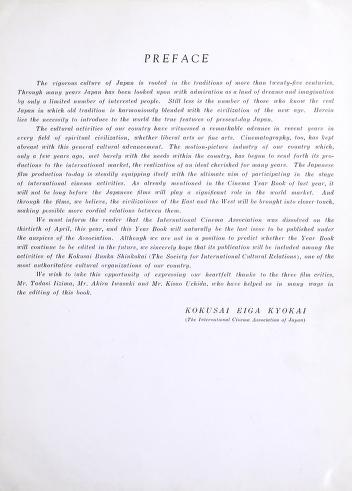日本映画 - Japan
By Kallan Benjamin

Japan has a long and distinct cinematic history. Moving images were recorded in Japan as early as 1898, and the first film studios were established by 1910, with major studio Nikkatsu founded soon after in 1912. In these early years, a distinctly Japanese style of film production and exhibition developed; into the 1920s, silent films were narrated by benshi, individuals who sat in front of the theater and explained the events onscreen. The popularity of benshi dictated the style of films made in Japan, resulting in a theatrical mode that relied on the benshi to tell the story, rather than using other cinematic means to do so. This period also saw the development of two key distinctly Japanese genres: jidaigeki (period dramas) and gendaigeki (modern dramas). By the early 1920s, though, some filmmakers had also started adopting techniques from American and European films, and after a 1923 earthquake destroyed much of Tokyo (previously the country’s filmmaking center) there was a break with the old style and a shift towards a less theatrical approach.
These cultural and industrial changes are detailed in the Cinema Year Book[s] of Japan below. Covering the years 1936–1938, these yearbooks, published in English, were intended to promote the exhibition of Japanese films abroad and introduce foreign markets to Japanese cinema. In addition to photos from films and publicity shots of Japanese stars, these books include film reviews, articles about Japanese cinema history and its characteristics, an essay on the exportation of Japanese films, and useful indexes related to film production and exhibition. The yearbooks offer insight into Japanese film production in the 1930s and into the globally-minded cinema culture of pre-WWII Japan, just before filmmaking came under state control in 1939.

![Scanned page from Cinema year book of Japan [1937]](https://archive.org/download/cinemayearbookof00inte/page/n6_w200.jpg)
